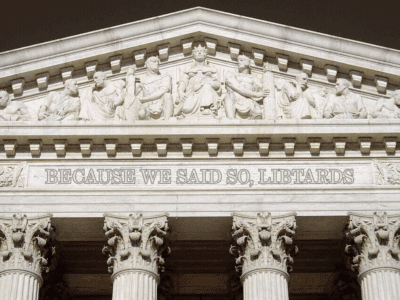Guest Blogger Michael Wara: The Trump Administration Moves to Guarantee Profits for Coal-fired and Nuclear Power Plants
Finally, something anti-regulation conservatives and pro-environment progressives can agree on: dislike of the Sec. Perry’s Resilience and Reliability NOPR
The gloves came off last week when it comes to the Trump Administration’s attempts to subsidize coal in U.S. electricity markets. On Friday, Energy Secretary Rick Perry formally requested that the Federal Energy Regulatory Commission guarantee profits for both new and existing coal fired and nuclear power plants. While Sec. Perry doesn’t have the power to take this extraordinary action on his own, FERC does. What happens next will be a true test of the professionalism and independence of the nations energy regulator. It is also probably more significant for air quality and climate than anything happening at the Environmental Protection Agency.
Unfortunately, rather than ignoring the proposal, as is their right, the newly appointed Commissioners at FERC are showing signs of taking it seriously. They have decided to hear comment on Sec. Perry’s proposal on an expedited basis. This is totally contrary to longstanding practice at the Commission that would suggest crafting a process to fully consider the issues Sec. Perry raises and dealing with them in a fashion consistent with the norms of competition FERC has worked so hard to establish in energy markets.
Secretary Rick Perry issued a Notice of Proposed Rulemaking under little used Department of Energy Organization Act authority to propose rules before FERC (Professor Joel Eisen indicates that this authority has not been used since 1985). The proposal, taken at face value, runs directly counter to almost 30 years of FERC regulatory policy aimed at steering electricity sector regulation away from picking winners and losers and towards supporting competitive processes and outcomes in bulk power markets.
In recent years, these competitive electricity markets have helped unleash transformative change across the United States by enabling a rapid shift away from higher cost coal-fired and nuclear power plants and towards natural gas-fired and renewable energy. These changes have led to dramatic declines in US greenhouse gas emissions from the power sector along with falling costs for wholesale electric power.
This summer, Secretary Perry requested and DOE staff delivered a report regarding the resiliency and reliability of the US power grid in the face of these changes. DOE expert staff concluded, after careful study, that at least for now, the changes were manageable. In short, the experts told Perry that the bulk power markets are working as intended and that no major intervention was currently warranted. Moreover after long and careful analysis, FERC recently took multiple actions to bolster the resiliency of the current bulk power system.
Secretary Perry, in the face of this expert report and FERCs measured process to improve the response of the grid in a crisis, proposed a rule that without justification alleges grave threats to the resiliency power grid, and in response would guarantee a profit to money losing coal and nuclear plants that would otherwise be shuttered by market pressures. Specifically, the rule appears to require recovery of costs plus a return on investment for all power plants that store a 90-day fuel supply on site.
Because coal and nuclear plants are the only facilities that can easily accomplish this, they are in effect selected for special treatment. Given that these facilities account for more than half of the generation fleet in the United States, the rule would essentially subdivide organized wholesale electricity markets in two –some power plants (natural gas and renewables) would still compete to supply energy to customers. But coal and nuclear plants would be guaranteed a return of costs and a return on investment, very similar to the way that these plants (and other utility assets) are compensated under traditional cost-of-service regulation.
As noted by Ari Peskoe, the proposed rule is legally deficient in a number of respects. It fails to justify why the current rate is unjust, unreasonable, and unduly discriminatory; it fails to connect the remedy – subsidizing power plants with an onsite fuel supply – to the alleged harm; and its inadequately justified reasoning would not likely survive a “hard look” by the courts.
But for FERC practitioners, the most shocking thing about the DOE proposal – or perhaps the reason for not taking it seriously – was the proposed timeline. Secretary Perry asks that FERC finalize within 60 days and that grid operator (RTO and ISO) tariff revisions implementing required changes be filed with the commission within 15 days after that. That kind of timetable isn’t even remotely reasonable – as an unlikely coalition of stakeholders that ranged from the American Petroleum Institute to the Solar Energy Industry Association argued to FERC on Monday.
All this might have just been, like so much that the Trump Administration has attempted in its first 10 months on the job, more flash than substance. But then something very strange happened on Monday. FERC invited parties to comment on the NOPR consistent with Secretary Perry’s super-expedited schedule. What this means is anyone’s guess. It might mean that FERC doesn’t take this proposal seriously and intends to take comment and then let the proposal sink under its own considerable weight. On the other hand, it might mean that the newly minted quorum at the Commission intends to strike a promised blow for President Trump’s base by undermining thirty years of work implementing market competition in electricity while at the same time undoing more than a decade of progress on power sector greenhouse gas emissions.
Bottom line: whether you care about free markets and freedom or the environment and sustainability, right now you need to be engaged in the argument about the future of wholesale electricity markets that is rapidly taking shape before FERC.
Michael Wara is Director, Climate and Energy Policy Program and Senior Research Scholar, Stanford Woods Institute for the Environment.






Reader Comments